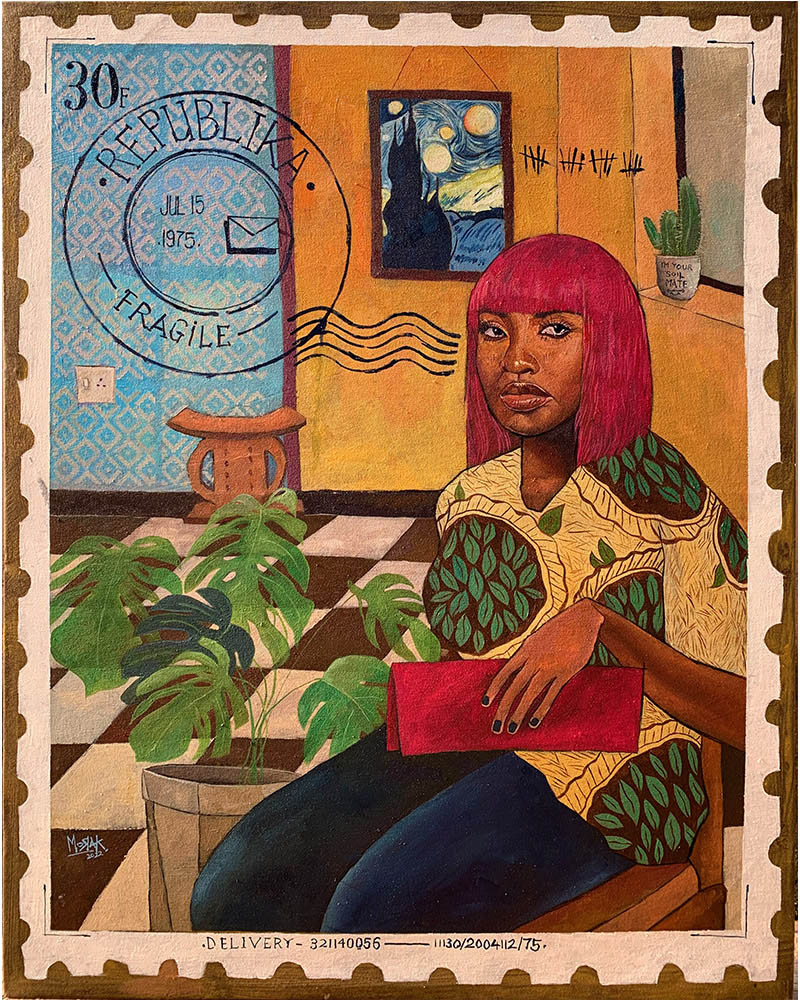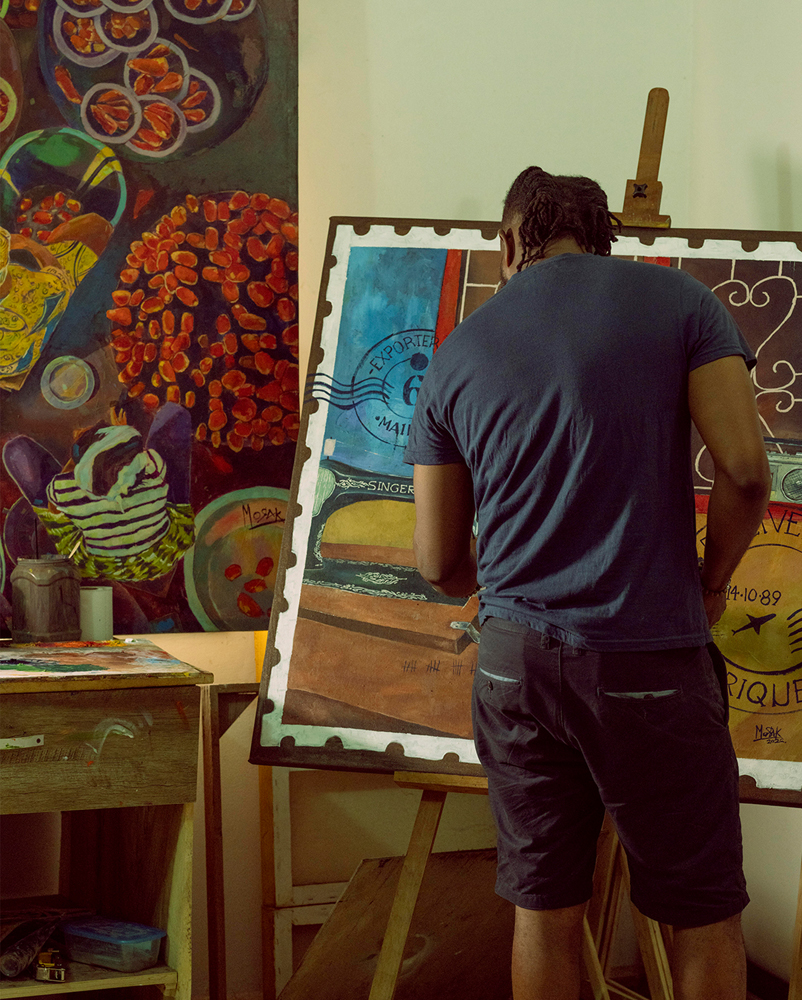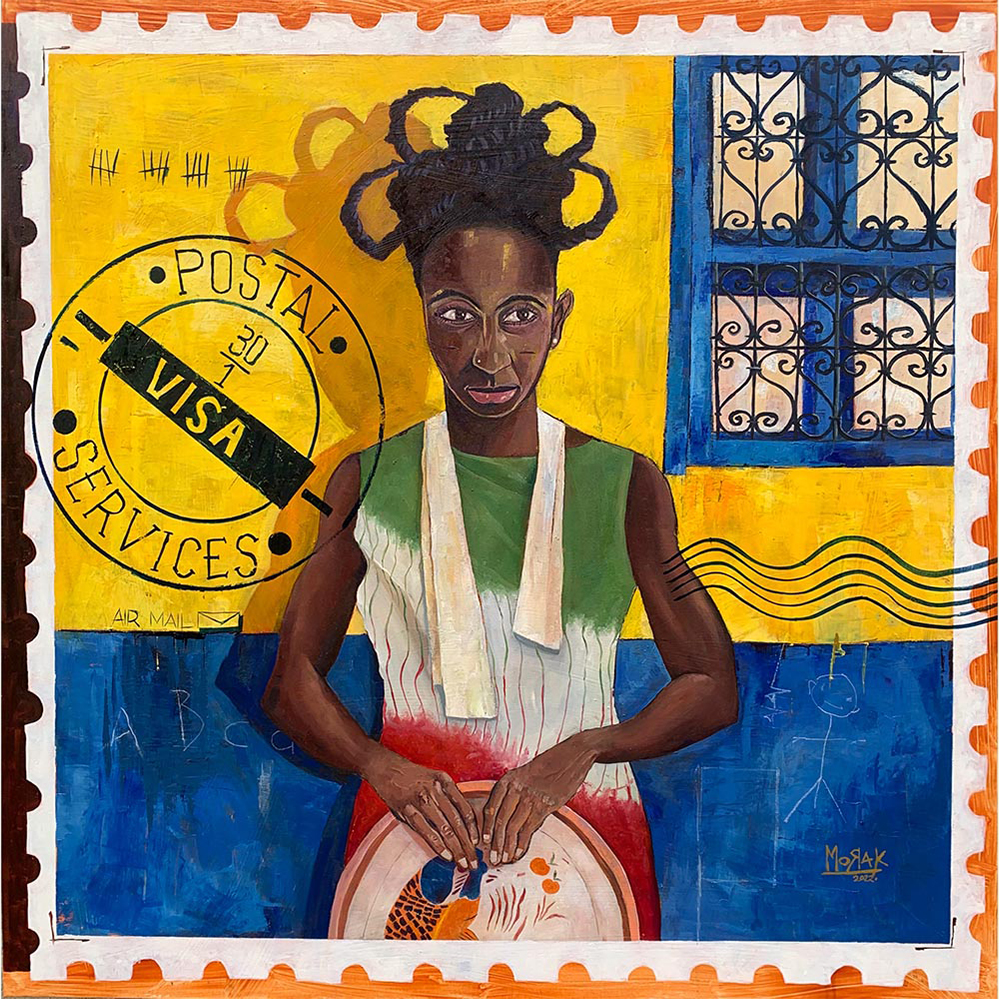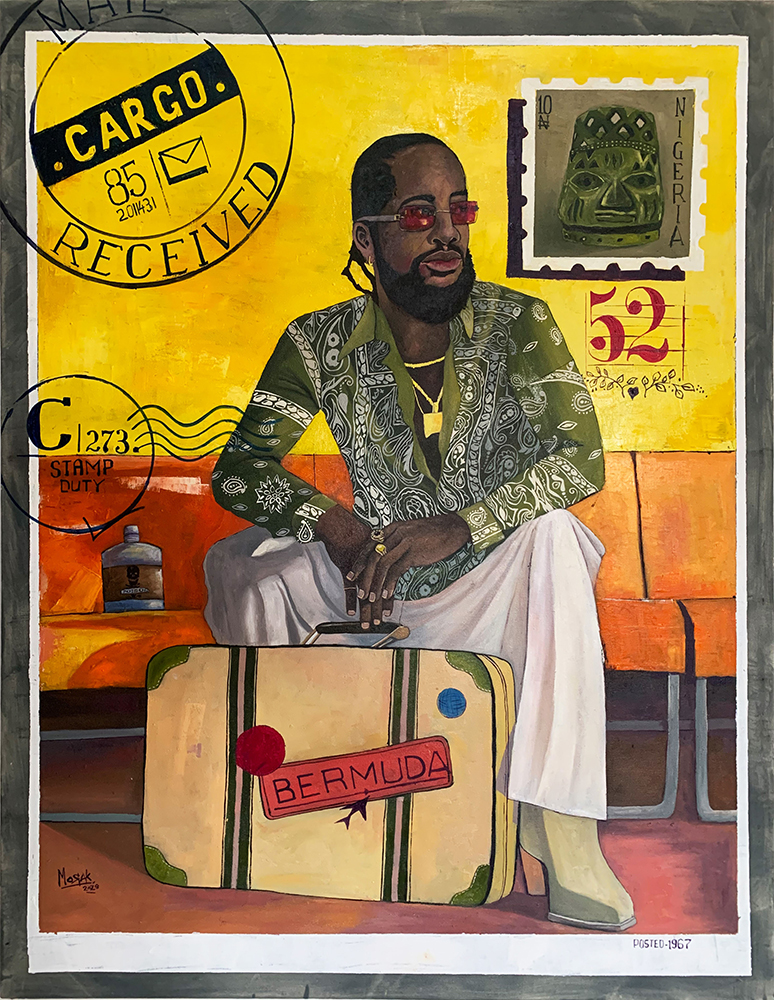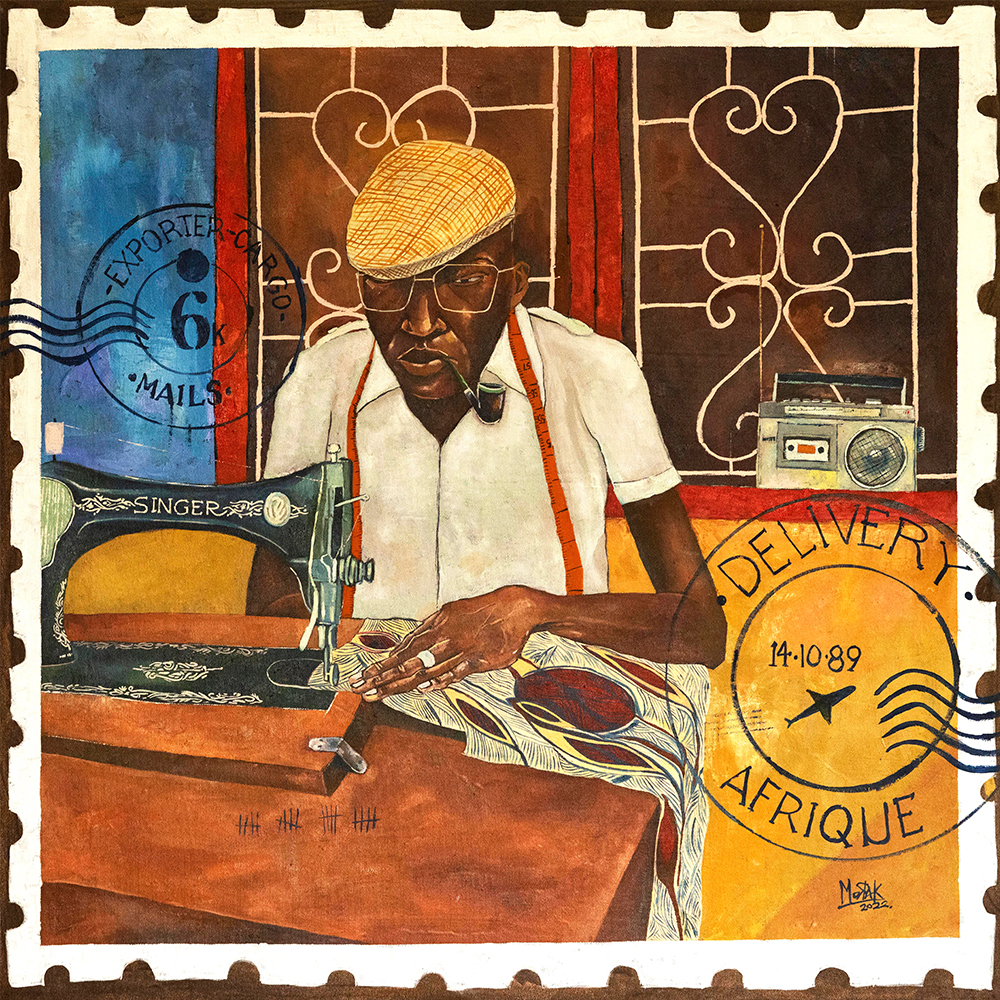
Artist’s Biography
Morakinyo Femi is a visual artist born in 1984 in Akure, Ondo State, Nigeria. His deep fascination with African culture, beliefs, and traditions has fueled his artistic journey and led him to become a full-time art director at a leading digital agency in Nigeria.
After completing his Fine Art degree at Yaba College of Technology in Lagos, Femi further honed his skills and developed a keen interest in graphic design and unique stylized painting. He employs various mediums such as acrylic, oil, and charcoal to create his distinctive artworks.
Femi’s artistic style revolves around classic and captivating storytelling, evoking nostalgic emotions and taking viewers on a visual pleasure ride. He manifests his love for vintage aesthetics by incorporating objects like box televisions, telephones, metal food bowls, moon trunks, and metal stars into his compositions. Through these elements, he portrays dramatic, absurd, and amusing amalgamations of ordinary individuals, capturing everyday moments and adding a touch of wonder to their lives.
Femi’s paintings reflect his focus on everyday narratives within domestic and social spaces. He finds inspiration in the ordinary and mundane rituals of daily life, whether it’s getting dressed in the morning, waiting for a phone call, or engaging in conversations at a hair salon. Using watercolor, acrylics, charcoals, and oils, he presents these quiet moments with boldness and a touch of humor. His artwork often references vintage clothing, objects, and electronics, which serve as nostalgic symbols of his personal history and experiences.
Femi Morakinyo’s artistic endeavors have garnered recognition and exposure. He had his first solo exhibition at Mydrim Gallery in Lagos in 2022. His works have been featured in Arthouse Contemporary’s Affordable Art Auctions, and he has participated in group exhibitions, including the Africa Day Celebration at UBA House in Lagos in 2010. With his unique artistic vision and dedication to capturing the essence of everyday life, Femi continues to make a lasting impression on the art world.
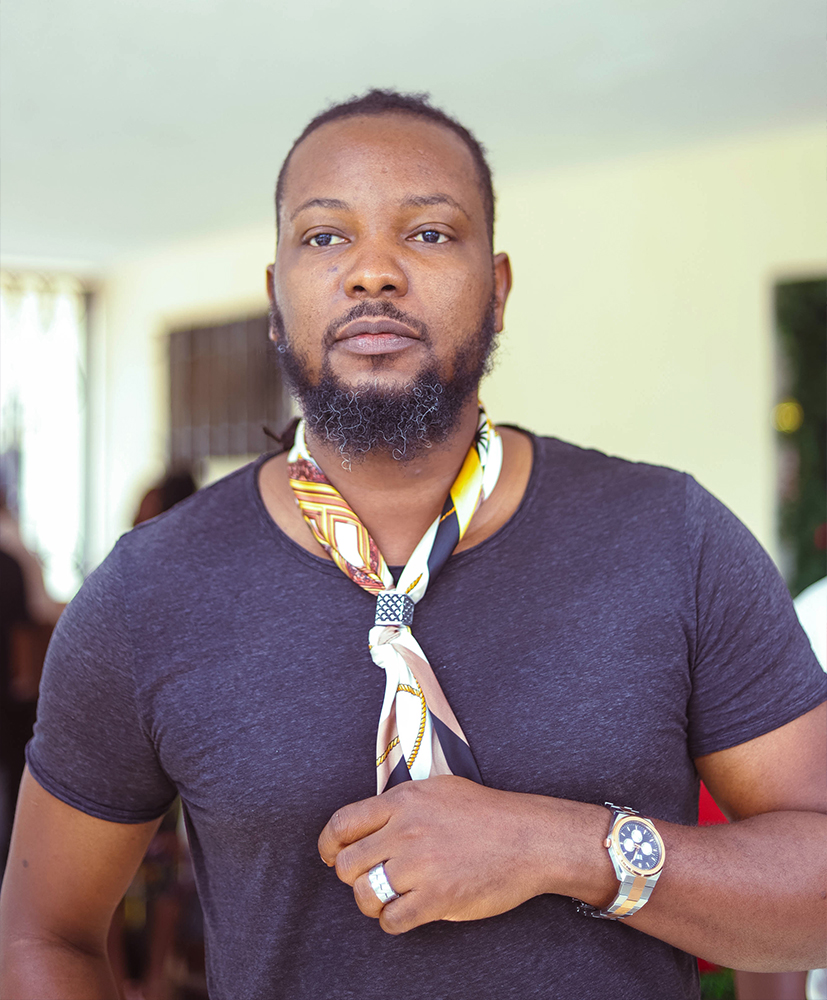
Interview Artist
Morakinyo Femi
By Carol Real
How were you influenced by your upbringing in Akure, Ondo State, Nigeria?
Growing up in Akure in the early 80s and 90s profoundly influenced my art. As a child, I was fascinated by my mother’s sewing machine, my grandfather’s upright piano, my father’s typewriter, my grandmother’s folk tales and superstitions, and my grandfather’s pendulum clock in the sitting room, as well as the cars of that time. Although most of these items no longer exist, my art is a bridge back to those cherished memories.
Who or what has had the greatest impact on your artistic approach? Which artists inspire your work and influence your style?
Postal stamps and a love of vintage items have significantly impacted my art. My father collected stamps, and I found the illustrations and pictures on them, which depict historical and cultural beliefs, particularly intriguing. I often replicate them in my drawings.
I draw inspiration from Nigerian master artists such as Duke Asidere, Diseye Tantua, Edosa Oguigo, Professor Kolade Oshinowo, and Olusegun Adejumo for their diligence and mastery. Additionally, foreign painters like Ron Hicks, Emmanuel De Sousa, and Zoe Frank profoundly influence my work. I appreciate their unique styles and earthy colors.
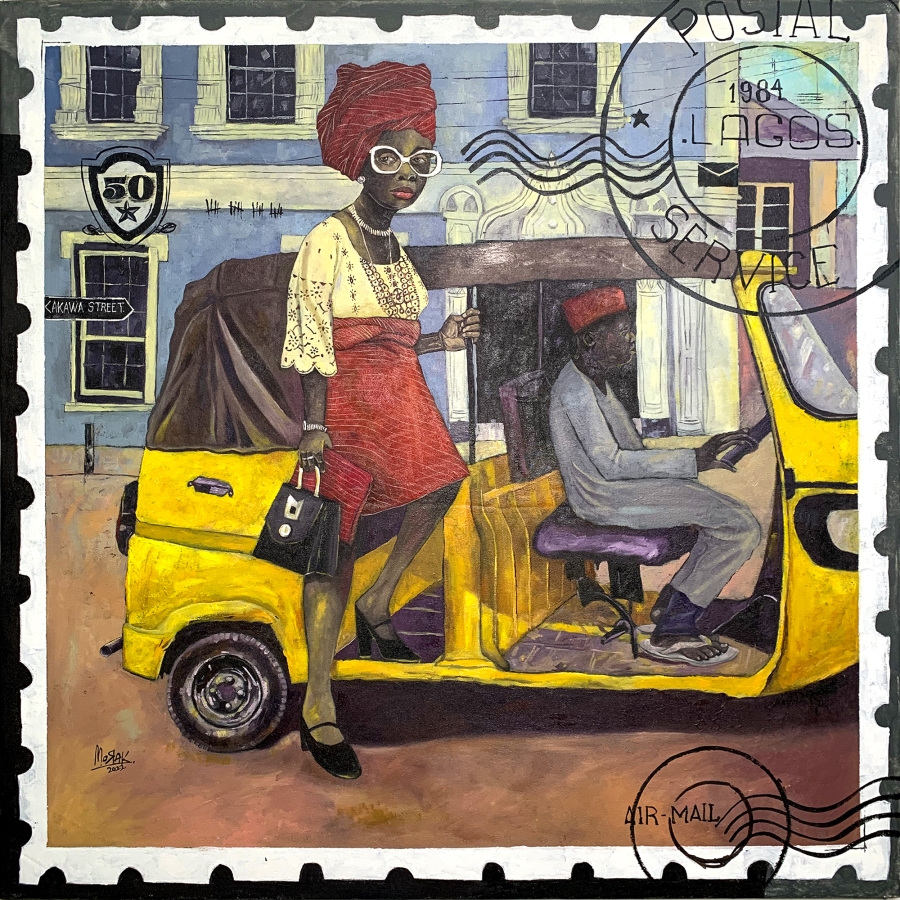
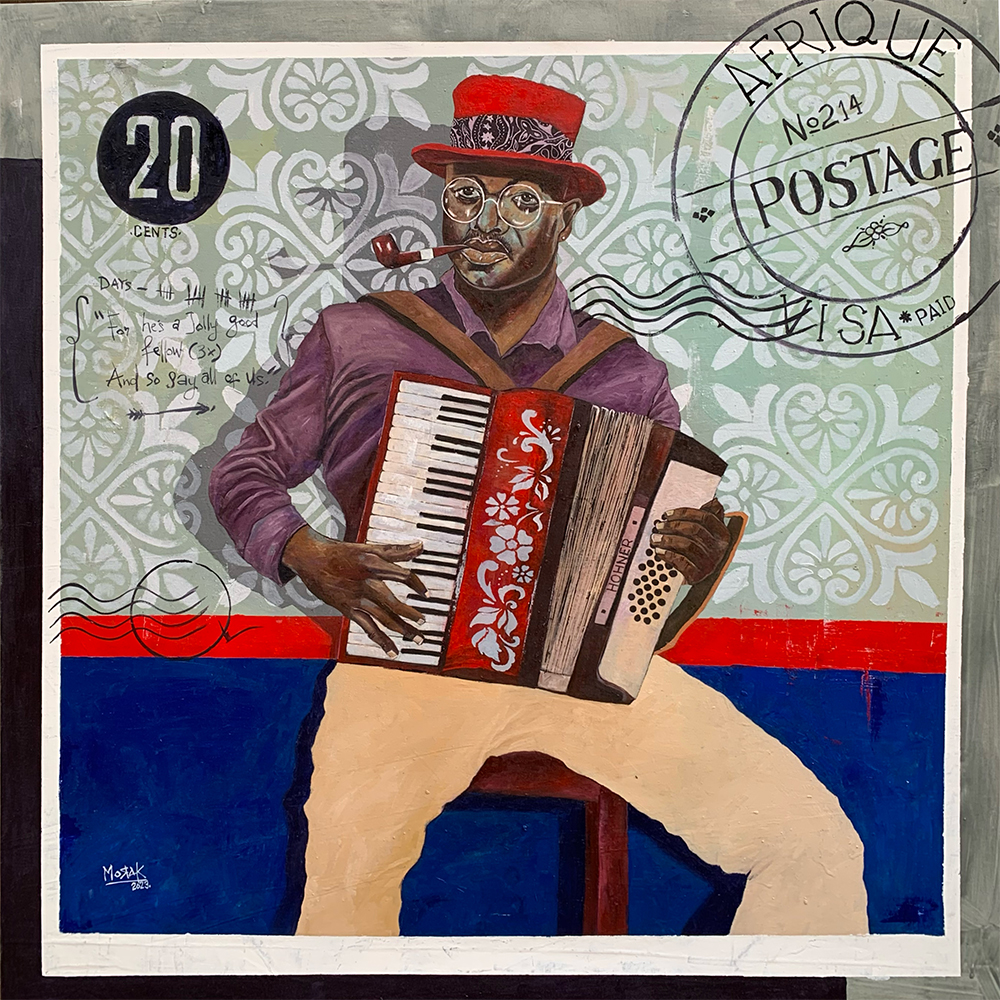
What are some of your unexpected hobbies or interests?
Believe it or not, I play the drums, and I’m a diehard football fan. (Laughs)
How did your grandmother’s collection of old textiles and vintage items inspire you as an artist?
In the 80s and 90s in western Nigeria, collecting exotic textiles and aluminum dishes was considered an art form in itself. It was a symbol of wealth, elegance, and fashion. The fabrics, in particular, were exquisitely designed, and their craftsmanship fascinated me as a child. Some textile patterns were unique to specific groups, associations, or tribes. The fabrics’ intricate designs and patterns became a significant part of my work since conversations during that period often revolved around fashion.
What motivated you to work in acrylic, oil, charcoal, and pastel?
After experimenting with various art materials, I discovered that I am most confident and comfortable using acrylic, oil, charcoal, and pastel as my preferred mediums. I can express myself best on any surface with them.
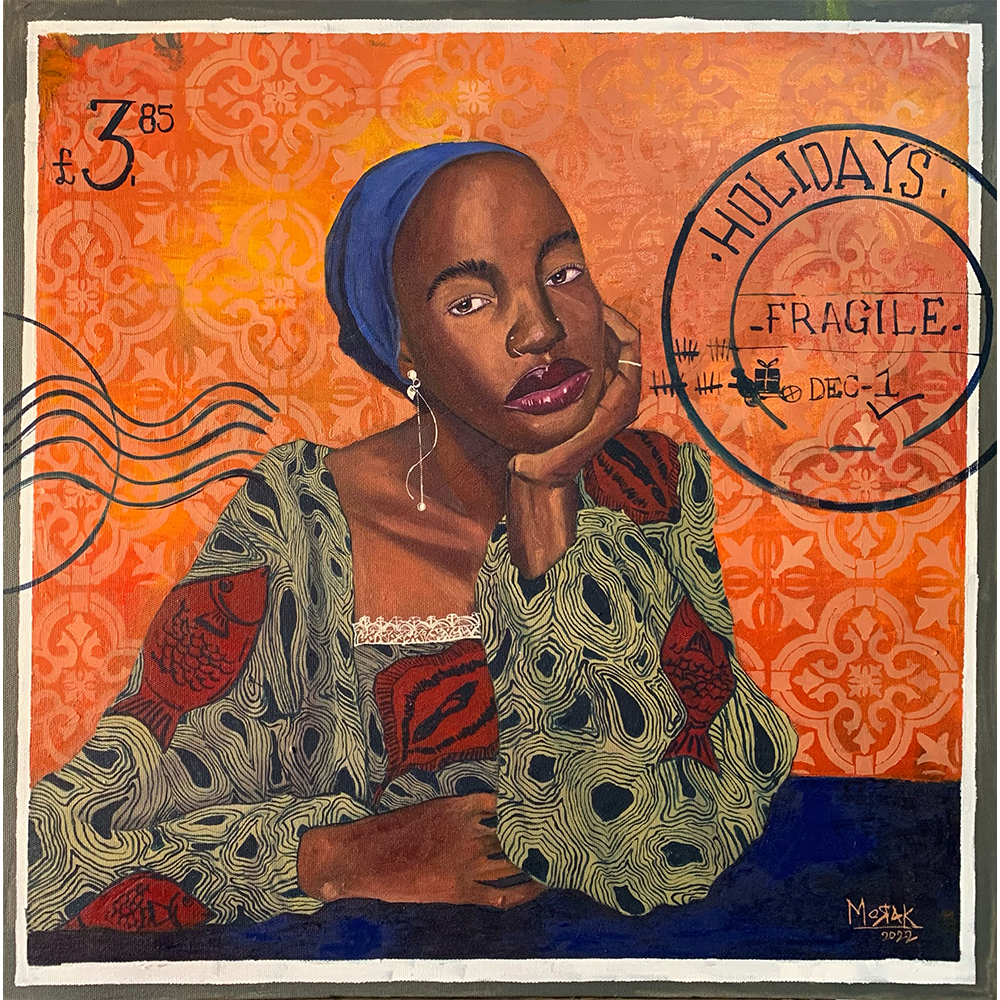
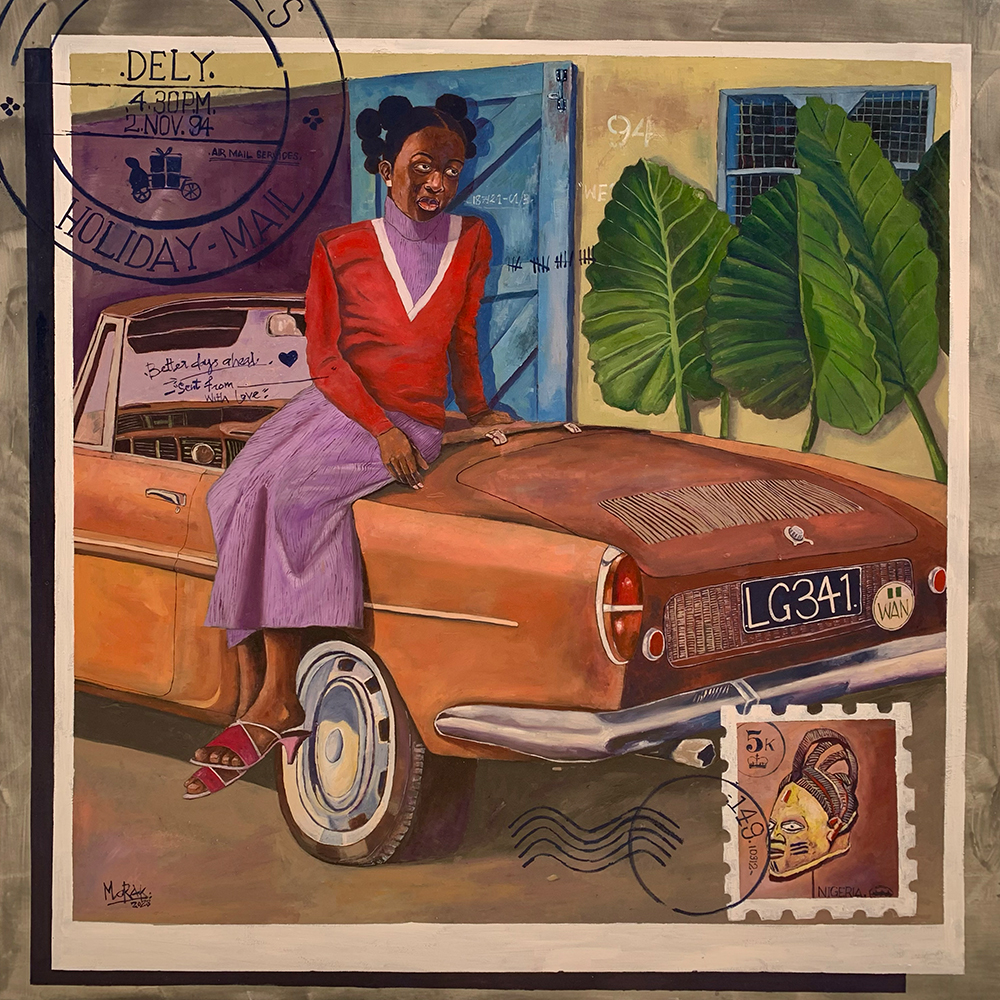
How do you incorporate antique objects into your artwork, and why?
I often incorporate vintage objects into my artwork by painting them alongside the main subjects to enhance the pictorial composition. Including these antique objects helps viewers better understand the background story of a particular artwork. Since my artworks carry a sense of nostalgia, the presence of antique objects allows viewers to understand the era, time period, or year the painting portrays.
What motivated you to pursue a career as a senior art director in a digital advertising agency?
I’ve always enjoyed advertising. I developed this appreciation during my industrial training as an illustrator and junior graphics designer at Prima Garnet Ogilvy from 2007-2008. The entire process of brainstorming, formulating ideas, and completing the project was fascinating. It was exciting and fulfilling to see my projects displayed on billboards and in press materials. After graduating, I received an offer to work at a digital advertising agency, which provided a different experience. I wanted to learn more while painting on the side.
What emotions or reactions do you hope to evoke in your audience?
Nostalgia. My works aim to transport the audience to a different time by drawing upon their existing memories or stories they’ve been told. I also guide them through an era before the technological boom. Additionally, my artworks reflect the fusion of the old and the new; making it easier for viewers of all generations to relate.
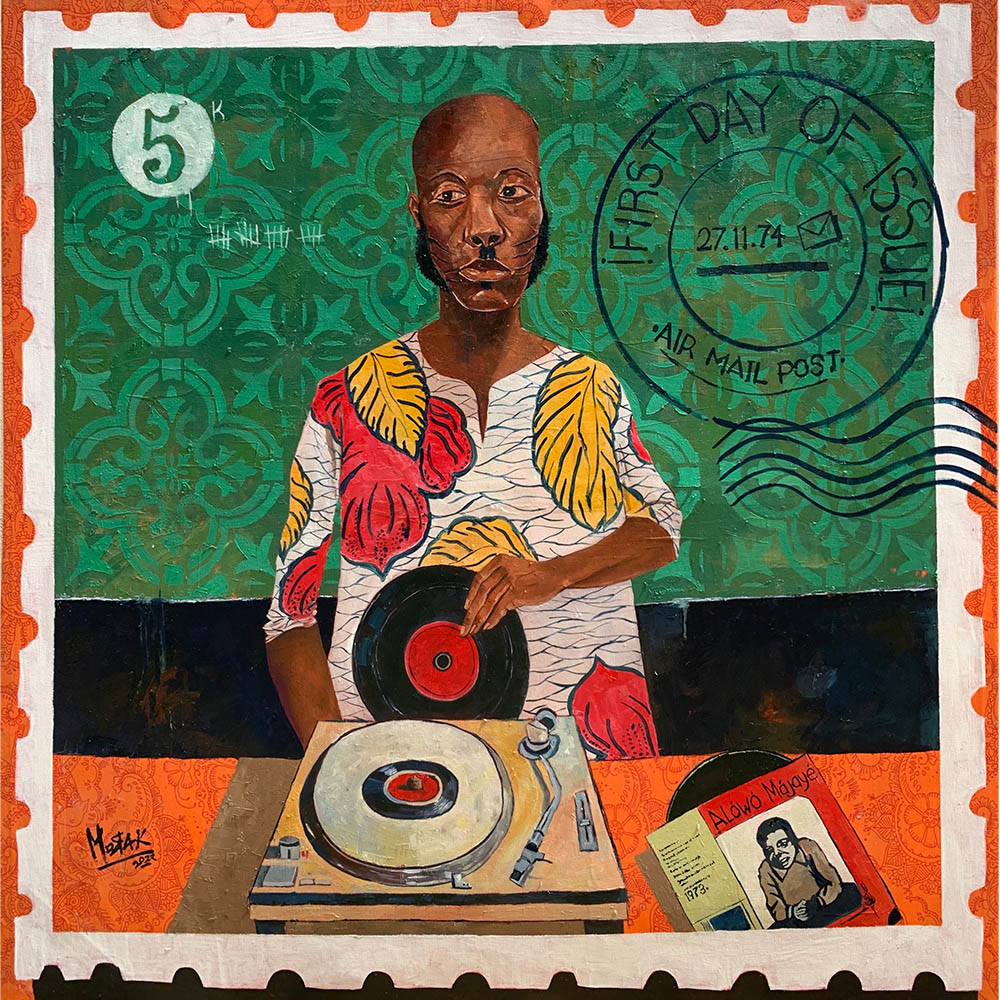
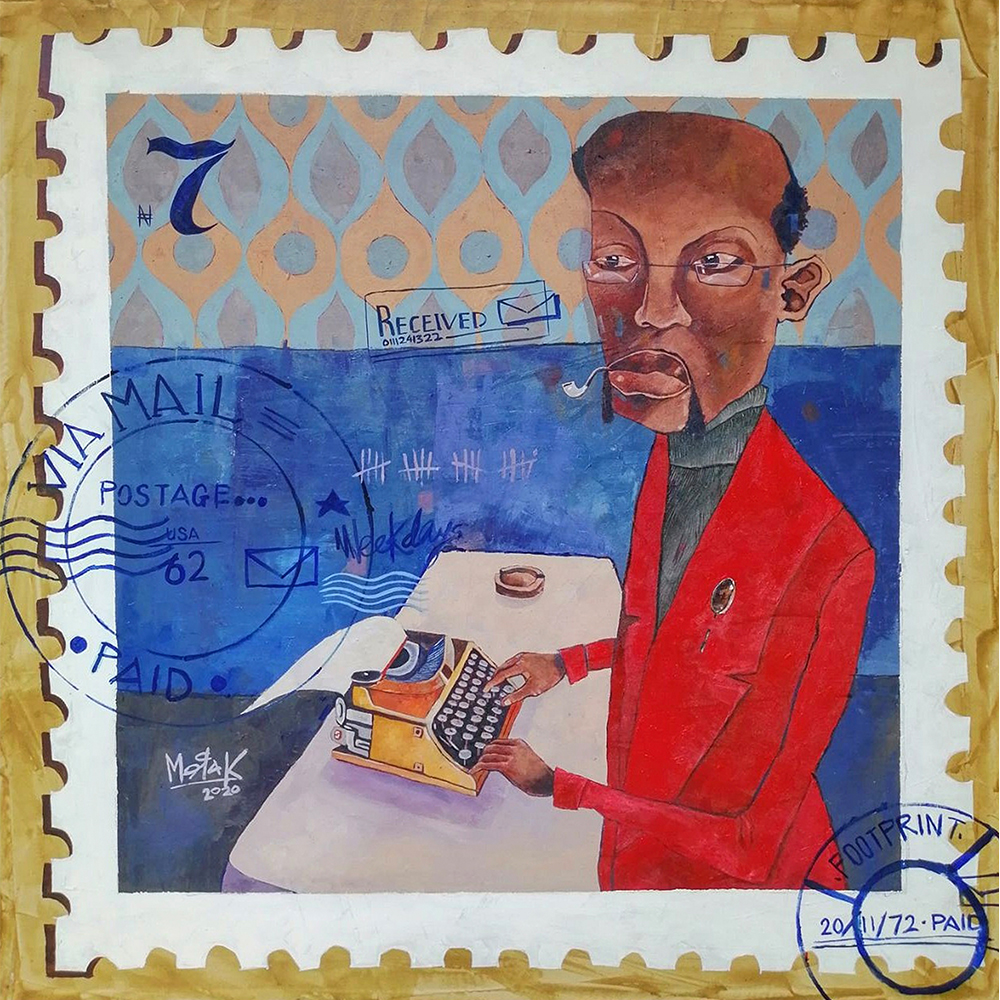
What advice would you give to aspiring artists just beginning their artistic careers?
My advice to aspiring artists is to be dedicated, hardworking, and constantly experiment to improve your artwork. Be unique and strive to stand out. Consistency is the key!
What is the role of art in society, and how do you contribute to it?
Art is life. It is deeply connected to culture and heritage, preserving traditions, stories, and practices, passing them down through generations. Art forms such as painting, sculpture, dance, music, and literature contribute to society’s rich and diverse cultural fabric.
In addition to its aesthetic qualities, my art captures moments in time, records historical events, conveys social ideas and concepts, and provides political or social commentary.
What is the importance of African culture, beliefs, and traditions in your work?
African culture, beliefs, and traditions hold immense meaning and inspiration for me as an artist. African culture is rich and diverse, comprising numerous ethnic groups and languages, with countless untold stories. My artwork is deeply rooted in my culture, and my artistic expression serves as a window into my heritage. For instance, you’ll often find my subjects adorned with traditional hairstyles, tribal marks, reminiscent of old African architecture. As an artist, this will continue to be my greatest source of inspiration.
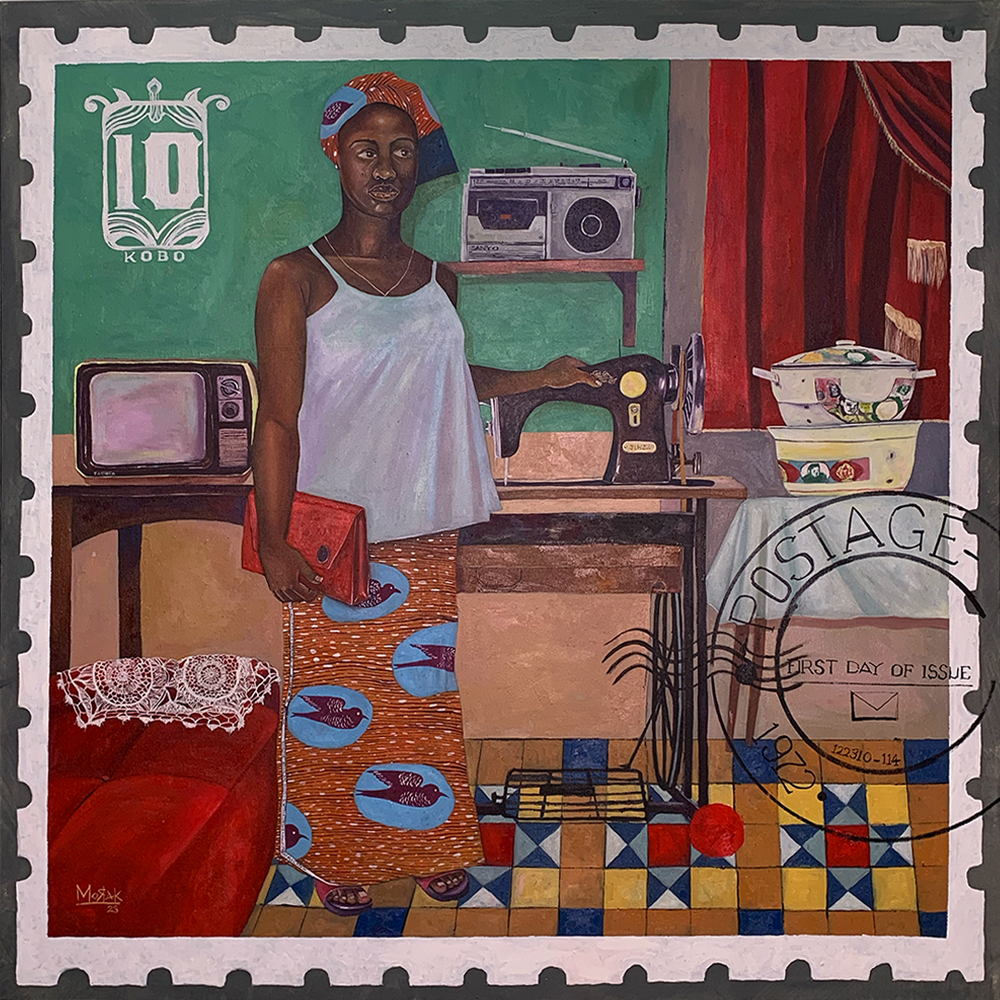
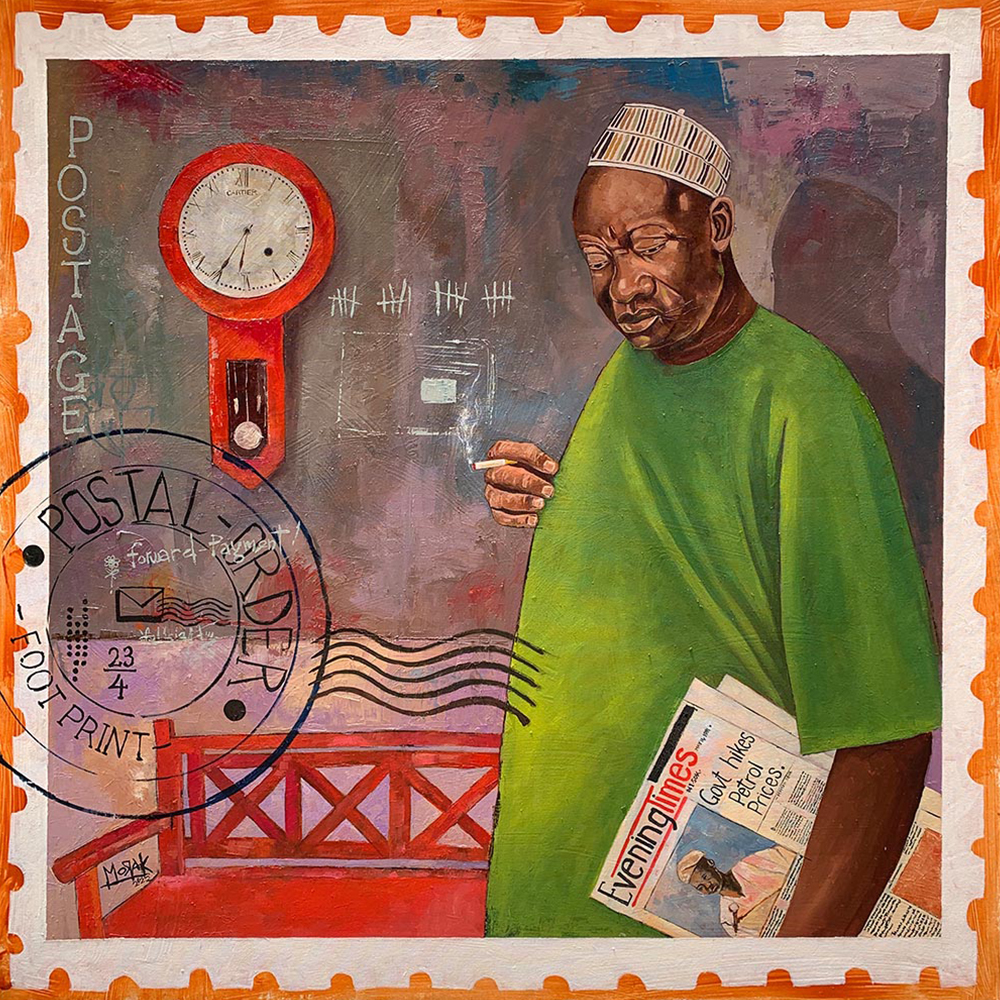
Do you see art and technology’s relationship evolving in the future?
I believe technology will continue to enhance the accessibility of art. Technological advancements in the art world are transforming the industry in various ways. From AI-generated art to virtual reality exhibitions, technology is creating new opportunities for artists and changing the way we experience and appreciate art.
Technology has increased accessibility, making it easier to share images, performances, words, and thoughts globally. It has fundamentally changed the way artists operate.
Are there any future goals or dreams you aspire to achieve?
My first goal is to consistently produce classic, timeless, and relevant works. I also aspire to reach a wider audience that appreciates my art. Having international representation and exhibiting in more foreign galleries, as well as being featured in international auction houses like Sotheby’s and Christie’s, are some of my biggest aspirations.
Image credits: All images courtesy of the artist
Editor: Kristen Evangelista
